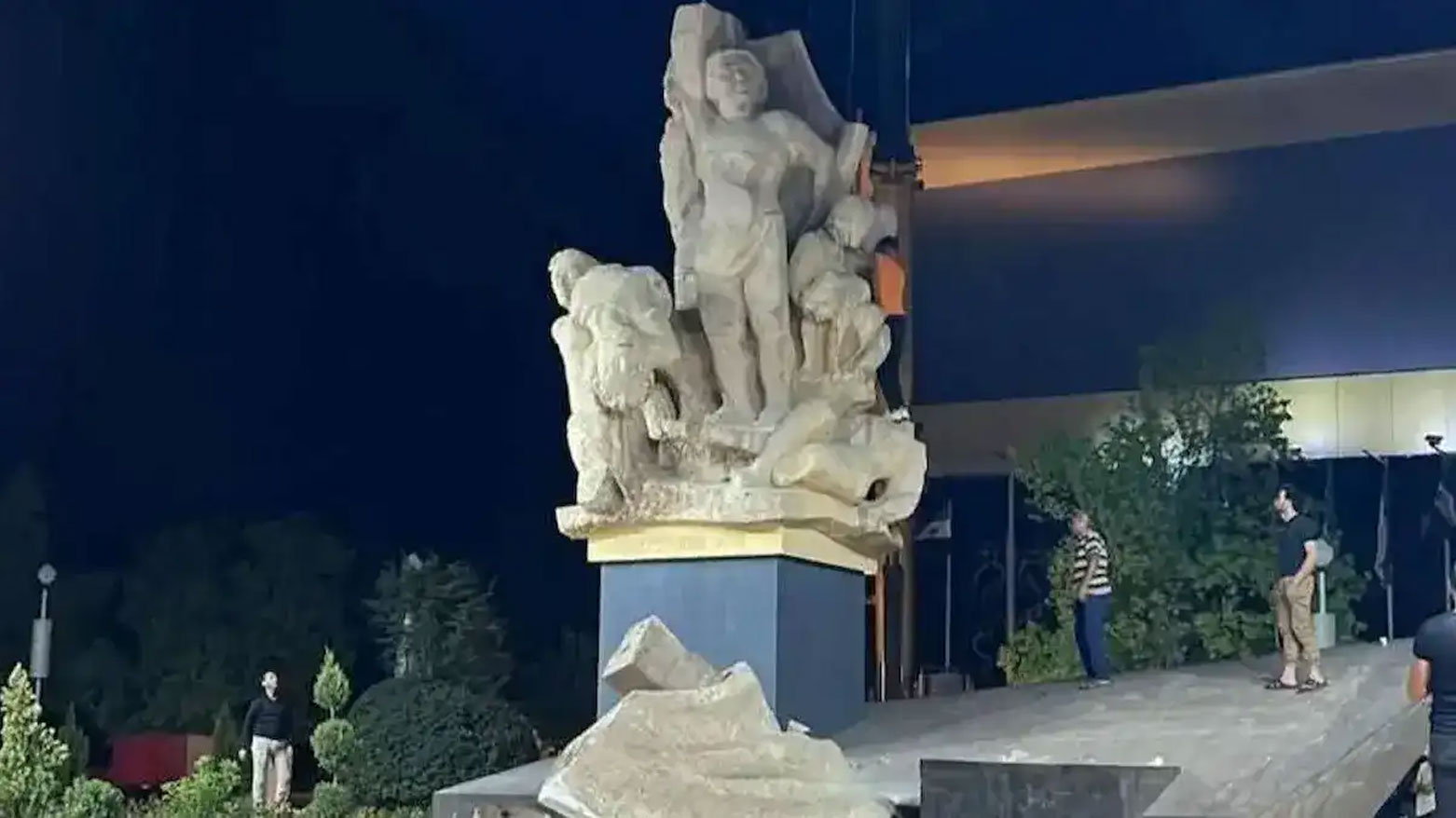Destruction of Aleppo's Martyrs' Monument Sparks Outrage and Debate
Public outrage erupted in Aleppo after the iconic Martyrs’ Monument collapsed during relocation to a museum. Officials blamed technical errors, but residents decried it as a cultural loss, sparking debate over the statue’s symbolic meaning and preservation.

By Kamaran Aziz
ERBIL (Kurdistan 24) — A wave of public anger has erupted in Syria’s northern city of Aleppo following the collapse and destruction of the iconic “Martyrs’ Monument” in Saadallah al-Jabiri Square during a controversial attempt to relocate it to a museum. The event has provoked widespread condemnation among residents and activists, some of whom have described the incident as a “violation of the city’s memory.”
According to Aleppo Governor Azzam al-Gharib, the statue was being moved as part of a broader urban revitalization plan targeting the city center.
The relocation, he said, aimed to preserve the statue by housing it in a museum. However, he acknowledged that the execution of the relocation was flawed, labeling the mishap as “unacceptable” and promising accountability for those responsible. "The executing party did not adhere to technical standards," he stated.
The Directorate of Antiquities and Museums in Aleppo issued a statement explaining that the monument was being moved "to preserve it and its artistic value."
Officials clarified that the relocation was intended to be the first step in a professional restoration project. The square, they added, would be repurposed for cultural and popular events, especially since the statue had been partially obstructing a newly installed large screen.
Footage circulated by activists and shared widely on social media showed the upper part of the statue falling during the relocation, crashing to the ground in front of visibly shocked onlookers. According to Euronews, the moment was captured as workers used metal cables to hoist the statue.
Designed by renowned Syrian sculptor Abdulrahman Mouaqqat and completed in 1985, the Martyrs’ Monument—made from Aleppine yellow stone—was erected to honor those who died for Syria. Over the years, it had become an enduring symbol and one of Aleppo’s most cherished landmarks.
The incident has sparked intense debate among Syrians. Critics of the relocation project argued that the destruction may have been intentional. These claims gained traction after a video emerged of an unidentified man speaking minutes before the accident, declaring the monument a form of idolatry and calling its sculptor a "polytheist."
However, Aleppo’s governor refuted suggestions that the act was ideologically motivated. He maintained that the move was driven by civic planning considerations, citing "requests from some residents" who associated the monument with a "painful era" in Syria’s history.
The destruction has rekindled memories of the cultural and historical erasures that took place during Syria’s civil war. Over the past decade, several statues and memorials associated with the Ba’ath regime have been toppled, either through local government initiatives or by extremist groups. During the period of ISIS control from 2014 to 2019, numerous historical artifacts and heritage sites in Syria and Iraq were deliberately destroyed.
As of now, the future of the Martyrs’ Monument remains uncertain, but the emotional resonance of its loss continues to reverberate throughout Aleppo and beyond. Cultural preservationists have called for an independent investigation and a reassessment of policies concerning historical landmarks across Syria.
